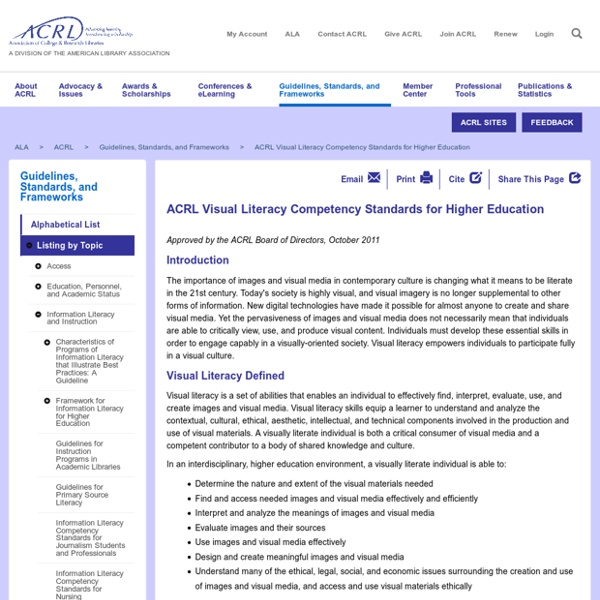ACRL Visual Literacy Competency Standards for Higher Education

Color Contrast - all about the difference - Love of Graphics
Contrast – a definition Contrast can be defined as “the difference in visual properties that makes an object (or its representation in an image) distinguishable from other objects and the background.” In plain English that could be described at its most basic level as “things which look different from one another” or as the definition taken from Cambridge online Dictionary “an obvious difference between two or more things”. The real meaning of form is made clearer by its opposite. Jan Tschichold, Typographer “The New Typography” Contrast – in color Remember thrusting your hand into a big pail of mixed-up, broken crayons, then leafing through your construction paper to find the perfect hue to go with your chosen sticks of pigmented wax? Contrast is the perceived difference in colors that are in close proximity to each other. Value Dark areas advance, or stand out, while light areas recede, or hang back.Dark areas also have more weight in terms of balance. Color The Pure Color (Hue) Contrast
Visual Literacy
Upon completing this lesson segment, you will be able to write a definition of visual literacy and match the three components of visual literacy to their respective meanings. Visual literacy is the ability to understand, create, and use visual images. Visual literacy has three parts: Visual thinking is the ability to transform thoughts, ideas, and information into all types of pictures, graphics, or other images that help communicate the associated information. Visual communication is when pictures, graphics, and other images are used to express ideas and to teach people. For visual communication to be effective, the receiver must be able to construct meaning from seeing the visual image. Visual learning is the process of learning from pictures and media. Visual learning includes the construction of knowledge by the learner as a result of seeing the visual image.
Visual Design Basics
Visual design focuses on the aesthetics of a site and its related materials by strategically implementing images, colors, fonts, and other elements. A successful visual design does not take away from the content on the page or function. Instead, it enhances it by engaging users and helping to build trust and interest in the brand. Basic Elements of Visual Design The basic elements that combine to create visual designs include the following: Lines connect two points and can be used to help define shapes, make divisions, and create textures. Principles for Creating a Visual Design A successful visual design applies the following principles to elements noted above and effectively brings them together in a way that makes sense. Unity has to do with all elements on a page visually or conceptually appearing to belong together. Example of Pulling it all together Additional Information
Type Design
Introduction Design History Family Classifications An Introduction to Type Type Design Since the first recordings of letterforms the concept of the typographic form has evolved into a seemingly endless variety of designs. Type design variations fall within specific categories. Typeface The basic category of type design is the typeface: the specific letterform design of an alphabet , including the serif shape, x-height, length of ascenders and descenders, variation of stroke weight, and any other characteristics that differentiate it from any other design. Typestyle A typeface usually includes several design variations called styles . Character angle . Character weight. Character width . Font A collection of all the characters of a typeface in one size and one style is called a font. Type Family The complete assembly of all the sizes and styles of a typeface forms a type family, bearing the name of its typeface. Type Measurements Point, pica and inch conversions are as follows: Points Picas
Related:
Related:



